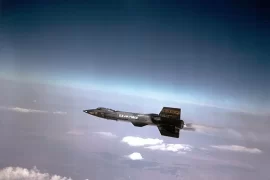Your first flight lesson is an exciting mix of thrill and learning, whether you’re a lifelong dreamer or new to aviation. This guide outlines what to expect, how to prepare, and tips to make the most of your cockpit experience.
Preparing for Your First Lesson
Before you even step into the aircraft, a few preparations can help set your mind at ease and make the experience more enjoyable:
- Wear comfortable, weather-appropriate clothing
Cockpits can get warm or cool, depending on the season and region. Wear layers to adjust as needed, and choose closed-toe shoes with good grip.
- Bring your ID and required documentation
You may need to show identification before you’re allowed onto the tarmac.
- Don’t forget the essentials
Sunglasses, sunscreen, a notepad for quick notes, and a bottle of water go a long way toward keeping you comfortable and focused.
Meeting Your Instructor
Once you arrive, you’ll meet your instructor, who will likely begin with a friendly conversation to get to know you and assess your goals and any previous experience you might have, even if it’s just as a passenger on commercial flights. They’ll answer your questions and explain how the lesson will progress.

Don’t hesitate to ask about anything on your mind—from safety procedures to how much of the flight you’ll actually get to handle.
Ground Briefing and Preflight Procedures
Before you even approach the aircraft, expect a thorough briefing. Your instructor will introduce essential concepts such as:
- Basic flight principles
Understanding lift, thrust, drag, and weight makes the upcoming experience more meaningful.
- Aircraft controls and instruments
You’ll get an overview of the yoke or joystick, rudder pedals, throttle, altimeter, airspeed indicator, and other cockpit essentials.
- Communication protocols
Listening for traffic advisories and communicating with ground control may be demonstrated, even if you’re not expected to handle the radio yourself.
Next, you’ll join your instructor in a preflight walkaround inspection. This hands-on step is essential for safety and helps you become familiar with the aircraft’s structure and parts. Whether you’re training at a flight school like those in Dallas or elsewhere, the instructor will show you how to check the fuel, inspect control surfaces, and ensure everything is flight-ready.
Climbing Into the Cockpit
Sitting in the pilot’s seat for the first time is an unforgettable experience. The cockpit may seem crowded with dials and gauges, but your instructor will focus your attention on a few critical elements at first. They’ll walk you through starting procedures, including the pre-start checklist, which further underscores the importance of thoroughness and attention to detail in aviation.
You’ll put on a headset for communication, and your instructor will explain what to expect during taxi and takeoff. If you’re eager, you might even handle some of the controls as you taxi to the runway under close supervision.
Takeoff and Initial Flight
Once it’s time to take off, the instructor will guide you through the maneuvers, likely handling most of the actual takeoff procedure but allowing you to follow along on the controls. It’s normal to feel a rush of excitement and maybe a few butterflies as you accelerate down the runway.
Soon after lifting off, you’ll transition into level flight, with your instructor encouraging you to take the controls. Expect to learn how every slight movement affects the plane, and you’ll start to get a feel for:
- Turning left and right (banking)
- Climbing and descending
- Reading basic instruments
- Maintaining straight-and-level flight
This hands-on experience, even if brief, is empowering and gives you a sense of control and responsibility. Your instructor will maintain a close watch, ready to step in if needed while letting you explore flight within safe parameters.
Enjoying the View
One of the most memorable aspects of your first lesson is the view. Pilots always remember their early moments above the earth, seeing familiar landscapes from a completely new perspective. Your instructor will likely encourage you to take it all in, reinforcing the beauty and privilege of flight.
Returning and Landing
Eventually, it’s time to return. Your instructor will demonstrate the approach and landing, explaining each step as you descend and align with the runway. You’ll get an insider’s view into the coordination and precision required to land smoothly, even if you’re not handling the controls this time.
Post-Flight Debrief
After landing and taxiing back, you’ll shut down the aircraft and head inside for a post-flight debrief. Your instructor will recap what was covered, point out highlights, and discuss next steps if you wish to continue your training. This is an excellent chance to ask questions and process everything you experienced.
Tips for Making the Most of Your Lesson
- Stay open and curious
Ask lots of questions, no matter how basic. Every pilot started with zero knowledge.
- Listen actively
Pay attention to your instructor, but also to how you feel throughout the flight.
- Take notes afterward
Jotting down impressions, terms, or skills you want to remember helps solidify your learning.
- Relax and enjoy yourself
Nerves are normal, but try to savor the experience. Most first lessons are low-pressure and paced to your comfort level.
Conclusion
Your first flight lesson marks the beginning of an adventure few undertake. Whether you decide to pursue further lessons or simply wanted a taste of life in the sky, you’ll walk away with a sense of accomplishment and a story to share.







